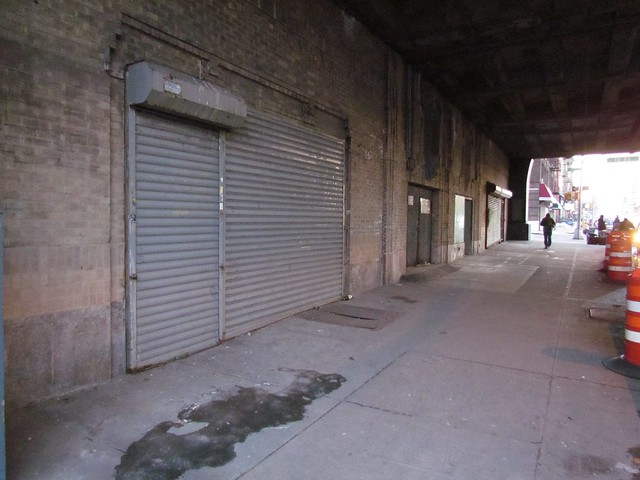
Bus ridership figures have declined dramatically over the past few years.
As the MTA touts the fact that subway ridership is on the up-and-up, its ever-shrinking bus network is telling a different story. Authority board members want to do something, anything, to reverse the downward trends, but a simple fix lies right beneath the authority’s nose. Will it be enough to save the bus system or are more dramatic changes in order?
First, the numbers. Subway ridership, we learned last night, is at levels not reached since 1947 before white flight, the true rise of the automobile and the general decline of New York City and its infrastructure. Bus figures though are going the wrong way. For 2011, bus ridership was 665.3 million — a hearty number, yes, but one that is 31.6 million trips fewer than the total from the year before. Bus ridership, in other words, declined 4.5 percent from 2010 to 2011.
These declines were not isolated to any time of the week either. Weekday rides were down 4.3 percent while weekend ridership shrunk by 6.4 percent. 2011 marked the first full year after the June 2010 service cuts that decimated the bus network, and it seems as though those cuts have driven a stake through the heart of the bus network.
Interestingly, the MTA doesn’t believe it’s losing transit riders, and the numbers bear them out. Average subway ridership increased by more than the number of bus rides lost between 2010 and 2011. Perhaps as the buses grow more inconvenient and less frequent, transit riders will opt for the subways instead. That’s the line Transit is pushing at least.
Yet, we shouldn’t be so accepting of that argument. A healthy and vibrant bus network is a component to any transit system. Although buses aren’t nearly as environmentally friendly as a subway, they serve to localize trips and offer more flexibility than a subway track. Buses can carry people over shorter distances and could offer interborough trips that are more direct than the round-about subway routing that invariably carries nearly everyone into and out of Manhattan.
So how to fix the buses and reverse this long-term trend? At the MTA Board committee meetings yesterday, some board members floated various ideas. “We have to start looking at the possibility of smaller buses in areas where there are not many people who need that service, and maybe a discounted fair for off peak hours, so as to encourage people back to using the buses,” Charles Moerdler said.
MTA officials, who described the declining bus ridership totals as “dire,” did not seem to embrace Moerdler’s idea. “Reducing off-peak fares is not something that we are considering at this time,” an authority spokesman said in a statement. Transit officials, meanwhile, are hoping that they will one day have the money to restore buses lost to the cuts but do not know when that time may be.
Even if we wait for money to materialize to restore these lost routes, the solution probably isn’t added service. Instead, it is to speed up the bus system. Buses in New York, as I’ve said many times before, are slow, plodding and unreliable. They’re at the whims of surface traffic and suffer through endless boarding delays. The secret of the faster and more popular Select Bus Service is the pre-board fare payment. That alone is responsible for the bulk of the service’s faster speeds. Enforced dedicated lanes and signal prioritization will help, but nothing gets buses moving faster in New York City than an end to the interminable wait for people to figure out how to dip their MetroCards.
Of course, instituting pre-board fare payment in its current form at every local bus stop in the city would be costly and inefficient. Many bus routes do not attract enough people for such a measure, and those are the ones that would benefit from more service. Transit then should try a balancing act: A faster roll-out of SBS-like services along popular routes coupled with more reliable service along others could make buses more attractive. Only then will New Yorkers return to the city’s surface transit network.














 (42nd Street Shuttle)
(42nd Street Shuttle)